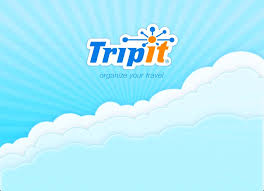Wow. I really thought this would be more clear-cut, but reflecting on my comparison points, it’s going to be hard for me to uninstall one of these applications. I have been using both TripIt and TripCase services for several months in parallel. I was an early adopter of TripIt and have been using it for a couple of years now, so I have some endearment for it along with its awesome automated trip management features.
Merging travel plans into a trip. Clearly, only TripIt provides this functionality properly. This is really the “secret sauce” of TripIt and its mandatory for complex and evolving itineraries. Having to merge the individual parts of trips in TripCase is really annoying.
Conflicting plan synchronization. TripIt comes out ahead in this category, and it has the ability to detect duplicate itineraries, flag them and allow you to easily select the right itinerary by showing when the itineraries were received. For those of you who book in advance to get the best prices, or use reward points, you will appreciate the value of this – the likelihood of getting an updated itinerary e-mailed to you (i.e., because the departure time changed by 5 minutes or other such logistical minutia) is pretty high.
Look and feel. Admittedly, this is a bit subjective. I prefer the TripCase interface for its simplicity and high-contrast visual style (e.g., white on black background), and the key information is displayed more clearly on the mobile application. Both mobile applications have a select trip, and swipe left-right for individual legs or parts of your trip. TripCase enables another level of detail for each trip part with “additional information” easily accessible. I also prefer the TripCase website – the TripIt web-site is very overwhelming with additional details and advertisements, which is annoying because as a premium user I would not expect ads to clutter my screen. To be fair. TripCase also does have some extraneous menu options to up-sell you on services but they are appropriately placed and don’t clutter the mobile application flow. How hotels are shown is also better in TripCase, where it shows a more prominent card on your check-in event, and a less obtrusive one for your check-out time, unlike TripIt which treats both as travel events which somewhat clutters the visual presentation of the list.
Service Integration. I am not an Uber user, but TripCase offers this which is really cool. Also, TripCase automatically synchronizes with my Travel Agent who uses Sabre which means updates and bookings are automatically added. This is a real bonus. These two features are probably the most stand-out capabilities for TripCase.
Meta-data. TripIt allows users to add notes and photos, which is immensely useful when you are doing research ahead of your departure. Inevitably, you will find a need for adding data and notes that don’t fit within the existing data elements for your individual trip elements. Adding photos has been a handy feature for me, as I like to add photos of locations, hotels and airlines when planning vacations. TripCase does offer a cool feature where is allows you to view photos of your hotel, automatically fetching them from vfmii.com.
Notifications. Both applications offer flight notifications and both are very timely. I can always count on them arriving at more-or-less the same time. TripIt has a neat user interface feature that flags trips as on-schedule, or experiencing delays, right on the trip summary list.
Value add features. TripIt has integration with Seat tracker, which is really valuable to know where you are sitting and alert if there is a better choice. However, most of that seat selection and research occurs prior to your booking, so I have never really used the Seat tracker integration with TripIt. TripCase does offer seat maps but it never seems to work for the flights I take. TripCase has a much nicer weather forecast integrated into the mobile application, which TripIt only offers on the web-site. Both applications offer maps integration. TripCase automatically adds directions to your itinerary, which I don’t often use, and it would be nice to have this as an option. TripIt offers loyalty points integration for the Premium service user.
TripCase might be a great option for people who rely on a Travel Agency that connects directly to the Sabre booking system (so you can imagine that’s almost every business traveller out there), and changes to parts of the trip for the same reference number get updated automatically. TripIt has much better overall trip management, between merging and reconciling conflicting plans. If you are a business traveller, I recommend going with TripCase and not even bothering to look at TripIt – mainly because you’ll just end-up like me: missing the cool trip management and notes capabilities of TripIt (i.e., if you never used it, you won’t miss it). If you mix both business and leisure, I would go with TripIt – the Sabre integration is nice, but I’ve never felt too burdened by updating itineraries, especially with TripIt’s features for reconciling conflicting plans.
The bottom-line: I think that TripIt edges out TripCase overall, but for business travellers who use an agency and Sabre (and who have not used TripIt before), just go with TripCase.

